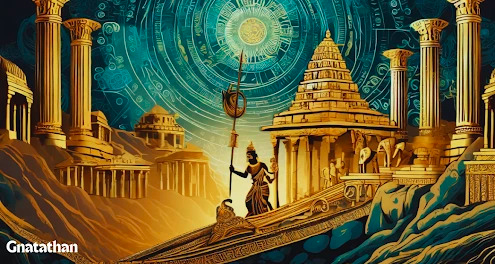Introduction
It is a term that resonates deeply within various communities around the world. This article explores the historical, social, and artistic significance of Gnatathan, examining how it shapes identity, traditions, and cultural practices.
Understanding Gnatathan
It refers to a rich tapestry of beliefs, customs, and practices. It embodies the values and philosophies of the people who embrace it and serves as a cornerstone for cultural identity.
Historical Background
The origins of Gnatathan can be traced back to [insert relevant historical details], where it was initially practiced in [insert location]. Over the centuries, Gnatathan has evolved, adapting to changing social dynamics while retaining its core significance.
Key Historical Milestones
- Early Adoption: The initial practices of Gnatathan began around [insert period], where it was primarily associated with [insert cultural or societal context].
- Cultural Integration: As societies changed, Gnatathans integrated with other cultural practices, creating a unique blend of traditions.
- Modern Evolution: In contemporary times, Gnatathan has adapted to reflect modern values while still honoring its roots.
Key Characteristics
It is characterized by several key features that define its cultural impact:
- Tradition: Passed down through generations, it ensures the continuity of customs and beliefs.
- Community Involvement: It encourages participation from community members, fostering a sense of belonging.
- Rituals: Specific rituals associated with Gnatathan play a crucial role in community life, marking significant events and transitions.
Principles of Gnatathan
Respect for Ancestry: Acknowledging the ancestors and their contributions to current practices.
Collective Identity: It fosters a sense of belonging among community members.
Sustainability: Practices are often designed to be environmentally friendly and sustainable.
Gnatathan in Contemporary Society
In modern times, the significance of Gnatathan remains strong. Many communities actively engage in practices celebrating their heritage and reinforcing their identity.
Social Impact
It plays a vital role in social cohesion. It helps build strong community bonds through shared practices and beliefs. People who participate in Gnatathan often report a sense of unity and collective identity.
Benefits of Social Cohesion
- Strengthened Relationships: Engaging in Gnatathan promotes connections among individuals.
- Conflict Resolution: Shared practices help mediate disputes and foster understanding.
- Community Support: Participants often provide mutual support in personal and communal challenges.
Artistic Expressions
It finds expression in various art forms, including music, dance, and visual arts. Artists draw inspiration from Gnatathan, creating works that reflect its themes and values.
- Music: Traditional songs often incorporate elements of Gnatathan, conveying its messages through melody and rhythm.
- Dance: Dance forms associated with Gnatathan are performed during festivals and ceremonies, bringing communities together.
- Visual Arts: Artworks inspired by Gnatathan serve as a medium to preserve and promote cultural narratives.
Forms of Artistic Expression Related to Gnatathan
Traditional Music
- Instruments: Use of indigenous instruments to create unique sounds.
- Lyrics: Songs often tell stories related to Gnatathan’s themes.
Dance Forms
- Types of Dance: Various styles reflect Gnatathan’s emotions and stories.
- Significance of Movement: Each movement often carries a specific meaning or message.
Visual Arts
- Painting and Sculpture: Artists create pieces that depict scenes from Gnatathan practices.
- Craftsmanship: Traditional crafts that reflect Gnatathan’s values and stories.
Gnatathan in Education
Understanding the Gnatathan is essential for promoting cultural literacy. Educational institutions increasingly recognize its importance in teaching students about diverse cultures and histories.
Curriculum Integration
Incorporating Gnatathan into school curricula can enhance students’ understanding of cultural diversity. Schools can include:
- Workshops: Hands-on workshops that allow students to engage with Gnatathan practices.
- Field Trips: Visits to cultural sites or festivals where Gnatathan is celebrated.
- Guest Speakers: Inviting cultural leaders to share their experiences and insights about Gnatathan.
Benefits of Educational Integration
- Cultural Awareness: Students gain an appreciation for different cultures and traditions.
- Critical Thinking: Encouraging students to analyze and reflect on cultural practices.
- Community Engagement: Promoting participation in local cultural events.
The Role of Gnatathan in Community Development
It also plays a significant role in community development. Engaging in these cultural practices can lead to positive outcomes in various areas:
Economic Development
- Cultural Tourism: Communities can attract tourists interested in experiencing Gnatathan.
- Local Artisans: Encouraging the production and sale of traditional crafts and artworks.
- Employment Opportunities: Creating jobs related to events and festivals celebrating Gnatathan.
Social Development
- Empowerment: Gnatathan can empower marginalized groups by giving them a voice through cultural practices.
- Youth Engagement: Involving younger generations in cultural traditions helps pass on knowledge and values.
- Conflict Resolution: Gnatathan can be a means of mediating conflicts within communities.
Challenges Faced by Gnatathan
While Gnatathan holds significant cultural importance, it also faces challenges in contemporary society:
Globalization
- Cultural Dilution: The spread of global culture can overshadow local traditions.
- Loss of Authenticity: Practices may change to cater to tourism or modern trends, losing their original meaning.
Urbanization
- Disconnection from Roots: People may lose touch with their cultural practices as they move to urban areas.
- Resource Constraints: Limited access to resources can hinder the preservation of Gnatathan.
Technological Impact
- Digital Influence: The rise of digital culture may lead to decreased participation in traditional practices.
- New Platforms for Expression: Technology also provides new avenues for sharing and promoting Gnatathan.
Preserving Gnatathan for Future Generations
To ensure the survival of Gnatathan, communities, and individuals can take proactive steps:
Community Initiatives
- Cultural Festivals: Organizing events that celebrate Gnatathan can draw attention and participation.
- Workshops and Training: Providing training for younger generations in traditional practices.
Education and Advocacy
- Curriculum Development: Schools should incorporate Gnatathan into their programs to teach students about their heritage.
- Community Advocacy: Encouraging local leaders to support Gnatathan through policies and programs.
Leveraging Technology
- Social Media Campaigns: Social media promotes and educates about Gnatathan practices.
- Online Resources: Creating websites and platforms to document and share Gnatathan’s information.
Conclusion
It is more than just a cultural practice; it is a vital component of identity for many communities. We can appreciate its significance in contemporary society by understanding its historical roots, social impact, and artistic expression. Embracing Gnatathan allows us to foster cultural diversity and promote social cohesion in an increasingly interconnected world.
Preserving and promoting Gnatathan is essential for maintaining cultural diversity and enriching our collective human experience. Engaging with Gnatathans enhances our understanding of different cultures and deepens our appreciation for the traditions that shape our world.
Frequently Asked Questions (FAQs)
What is Gnatathan?
It is a cultural practice encompassing a range of beliefs, customs, and rituals significant to various communities. It reflects their values and philosophies, helping to shape their identity and traditions.
What role does Gnatathan play in contemporary society?
In contemporary society, it fosters social cohesion and community bonding. It encourages participation in cultural practices and helps individuals connect with their heritage and identity.
Why is it essential to integrate Gnatathan into education?
Integrating Gnatathan into education promotes cultural literacy and awareness among students. It helps them understand diverse cultures, fosters critical thinking, and encourages community engagement.
What challenges does Gnatathan face today?
It faces several challenges, including globalization, urbanization, and technological influences. These factors can lead to cultural dilution and disconnection from traditional practices, making preservation efforts essential.



